| Travel Photos Home Page |
Travel Photos...Spain and Portugal
Lisbon, Part Two |
||||
|
To return to the Paintings section of this website, please CLICK HERE
|
|||
 |
|||
| We are now in Belem, a district a few kilometers West of the Pombaline centre of Lisbon.
The suburb was in the civil parish of Santa Maria de Belem and it gave its name to the "Torre de Belem", which you can see in the distance in this photo. Belem is Portuguese for Bethlehem. The official name of the tower is the Tower of St VIncent, but no one seems to call it that. |
|||
 |
|||
| The fortified tower was built in the early 16th Century to protect the harbour of Lisbon against pirates and invaders. The liquid horizon on the left is the Atlantic Ocean. | |||
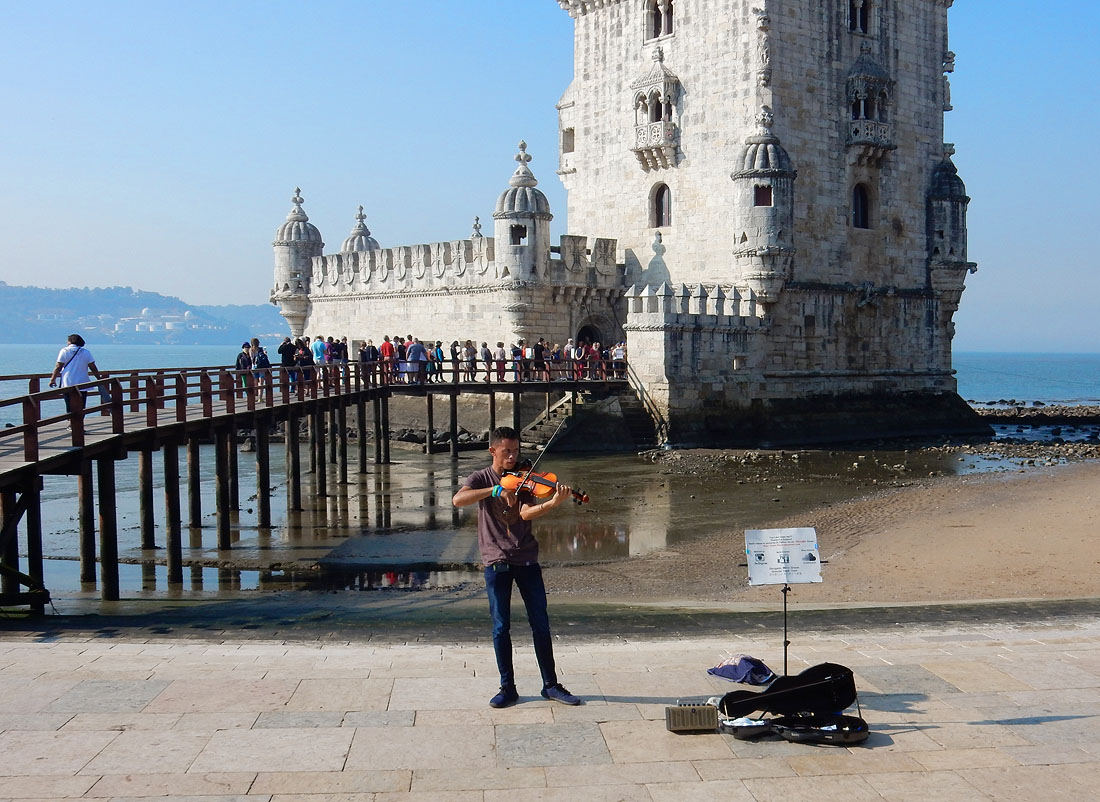 |
|||
| A busker serenades the Tower of Belem with his violin. At high tide, the tower is surrounded by the sea and is only connected to the shore with the pedestrian bridge. | |||
 |
||
 |
|||
| Our first glimpse of the Padrao dos Descobrimentos. This is a monument to the early Portuguese explorers who enabled this tiny nation to become a very wealthy, imperial power. | |||
 |
|||
| The monument above suggests the prow of a type of ship called the caravel, and the figure holding the model of a ship is Prince Henry the Navigator (1394 - 1460). He is often regarded as the person who initiated the European Age of Discoveries. Wiikpedia has this to say about his contribution to world history:
"Henry was 21 when he and his father and brothers captured the Moorish port of Ceuta in northern Morocco. Ceuta had long been a base for Barbary pirates who raided the Portuguese coast, depopulating villages by capturing their inhabitants to be sold in the African slave market. Following this success, Henry started to explore the coast of Africa, most of which was unknown to Europeans. His objectives included finding the source of the West African gold trade and the legendary Christian kingdom of Prester John, and stopping the pirate attacks on the Portuguese coast. At that time, the ships of the Mediterranean were too slow and too heavy to make these voyages. Under his direction, a new and much lighter ship was developed, the caravel, which could sail further and faster, and, above all, was highly maneuverable and could sail much nearer the wind, or "into the wind". This made the caravel largely independent of the prevailing winds. With the caravel, Portuguese mariners explored the shallow waters and rivers as well as the open ocean with wide autonomy." The caravel was vital in the early success of Portuguese explorers, like Vasco Da Gama. |
|||
 |
||
 |
|||
| This is a view of the monument from the West.
The bridge we can see in the distance is the Ponte 25 de Abril (25th of April). That date commemorates the Carnation Revolution which finally overthrew the dictatorship of the Estado Novo, which lasted from 1933 to 1974. It was called the Carnation revolution because it started as a military coup, but when the population took to the streets, carnations were put into the muzzles of the soldiers' rifles, and no shots were fired. It also signified the end of the Portuguese colonial empire. |
|||
 |
|||
| This is a monment to Vasco Da Gama, the explorer who was the first to sail via the Cape of Good Hope to India. | |||
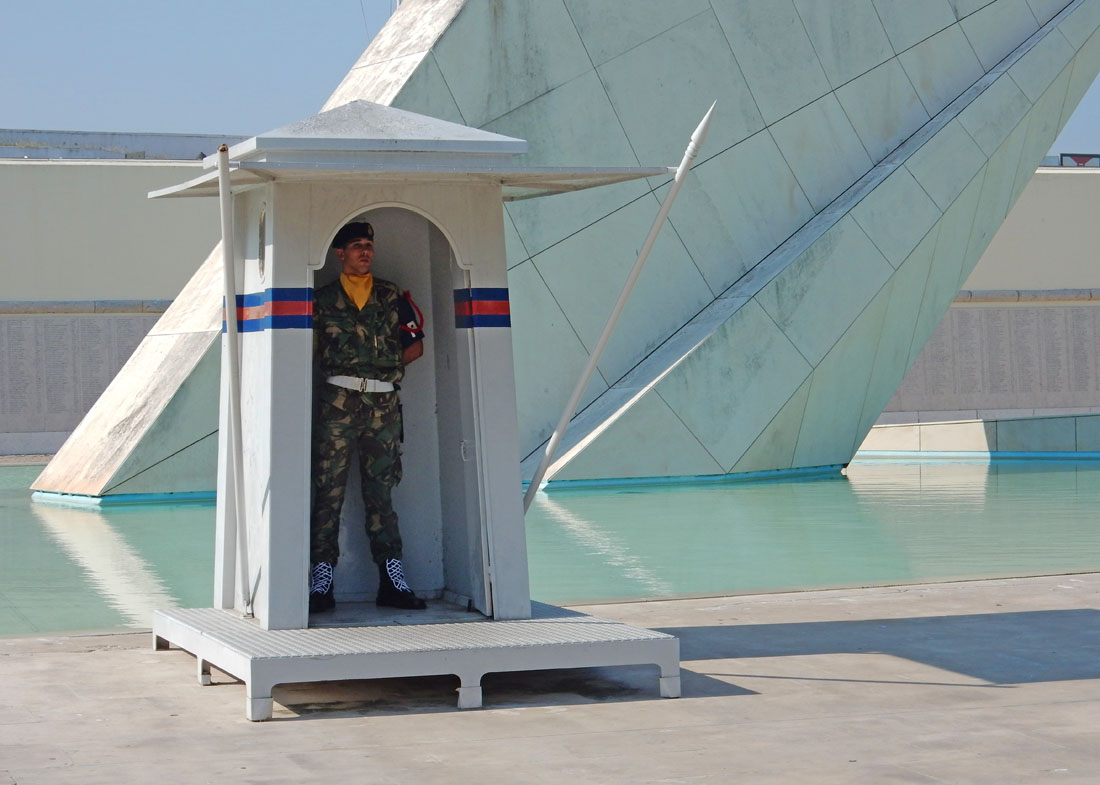 |
|||
| A sentry stands guard at the austere but impressive monument to the fallen soldiers. | |||
 |
|||
| I have mentioned the quaint little trams, funiculars and urban lifts of Lisbon, but this city is also blessed with an extensive and highly efficient metro system. It also has above ground trains which can take you quickly to places like Belem and beyond. | |||
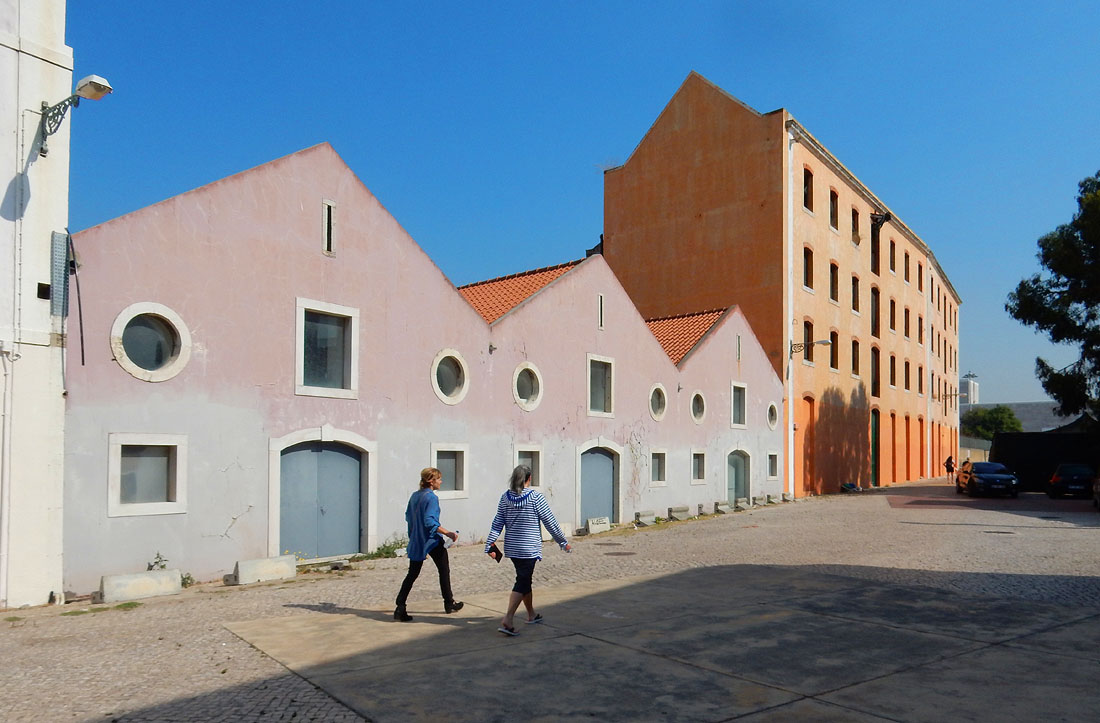 |
|||
| These buildings may have been warehouses from the time when this part of the estuary of the Tagus River would have been full of sailing ships, delivering cargo to Lisbon. | |||
 |
|||
| This long structure was the former Jeronimos Monastery (Mosteiro dos Jeronimos). It is one of the attractions of Belem. It was secularised in 1833 and the building was given to a charitable institution. At the extreme right of this photo, the building with the dome houses the Church of Santa Maria de Belem. | |||
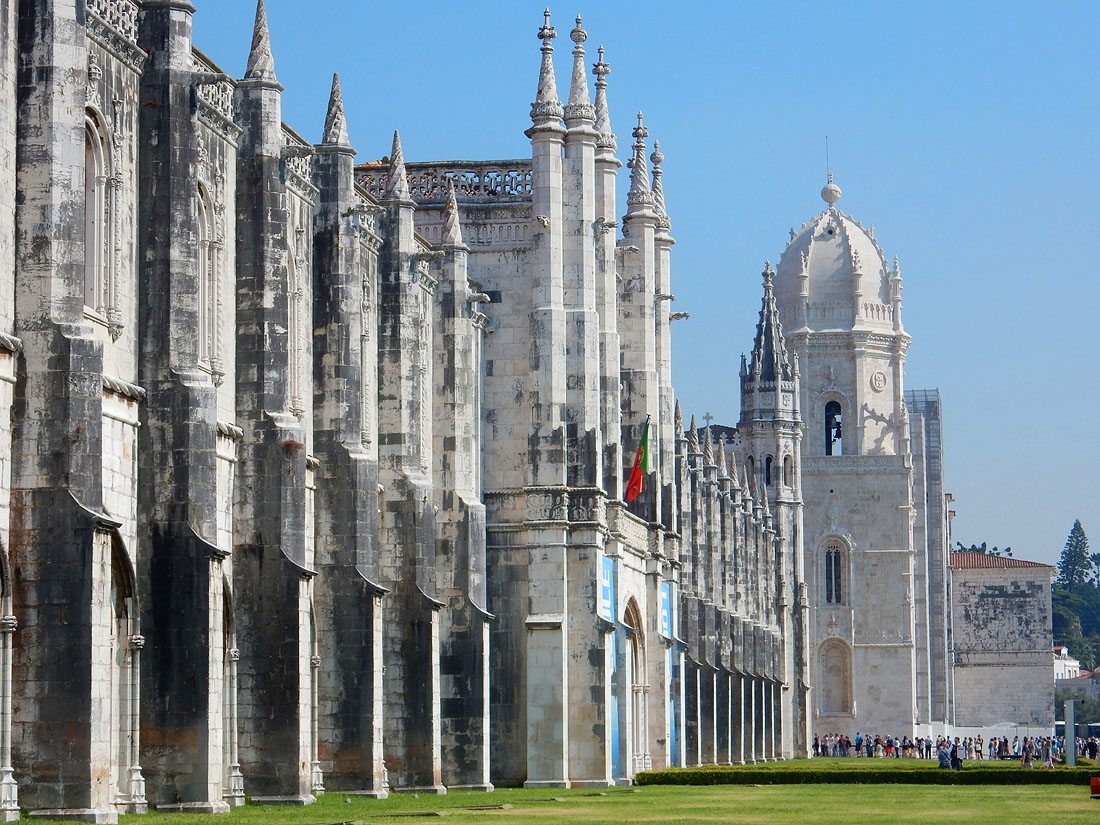 |
||
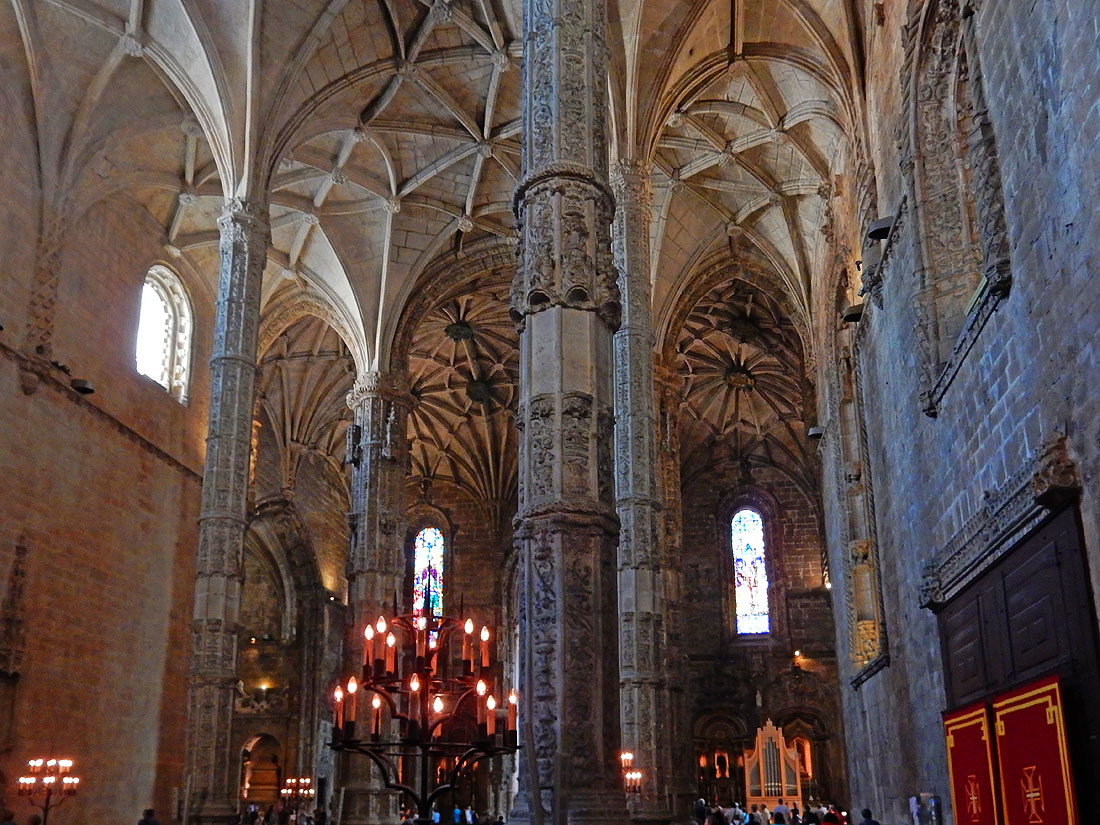 |
|||
| The Gothic interior of Santa Maria de Belem. | |||
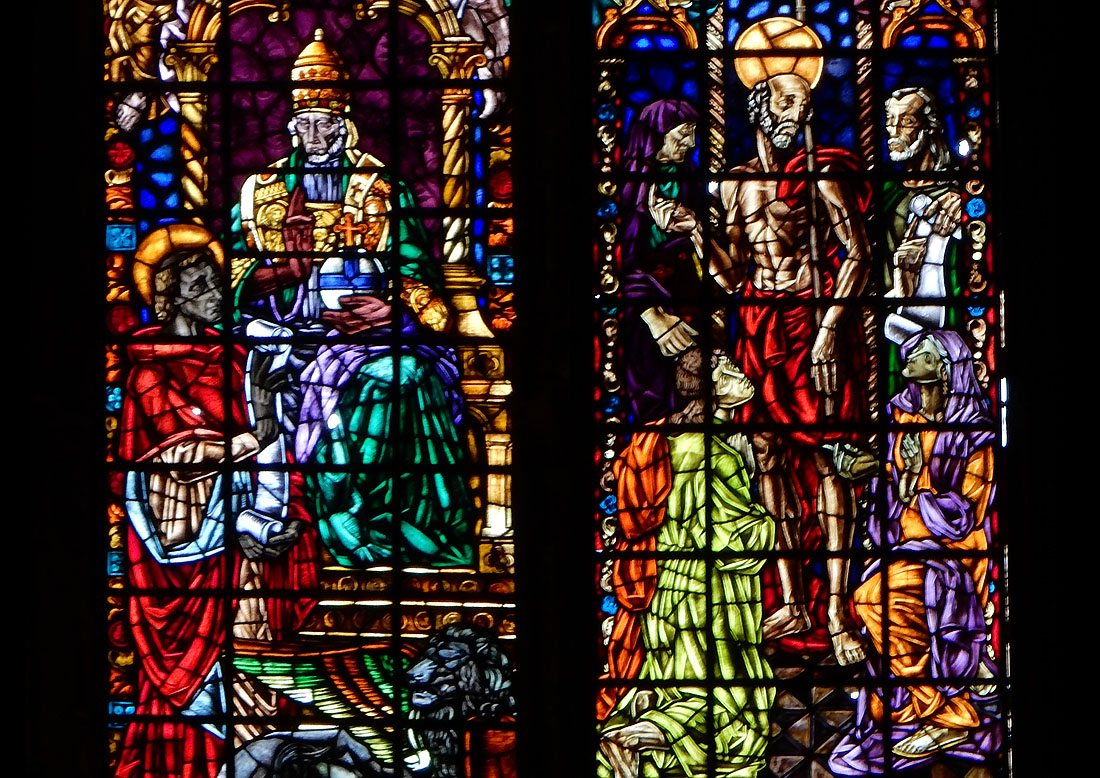 |
|||
| As we read that a painting now attributed to Leonardo da Vinci, called "Salvador Mundi" (Saviour of the World), has broken all records for prices paid for works of art, it is worth noting that this theme was extremely popular throughout the Middle Ages and the Renaissance. The stained glass window on the left shows Christ as Salvador Mundi. | |||
 |
||
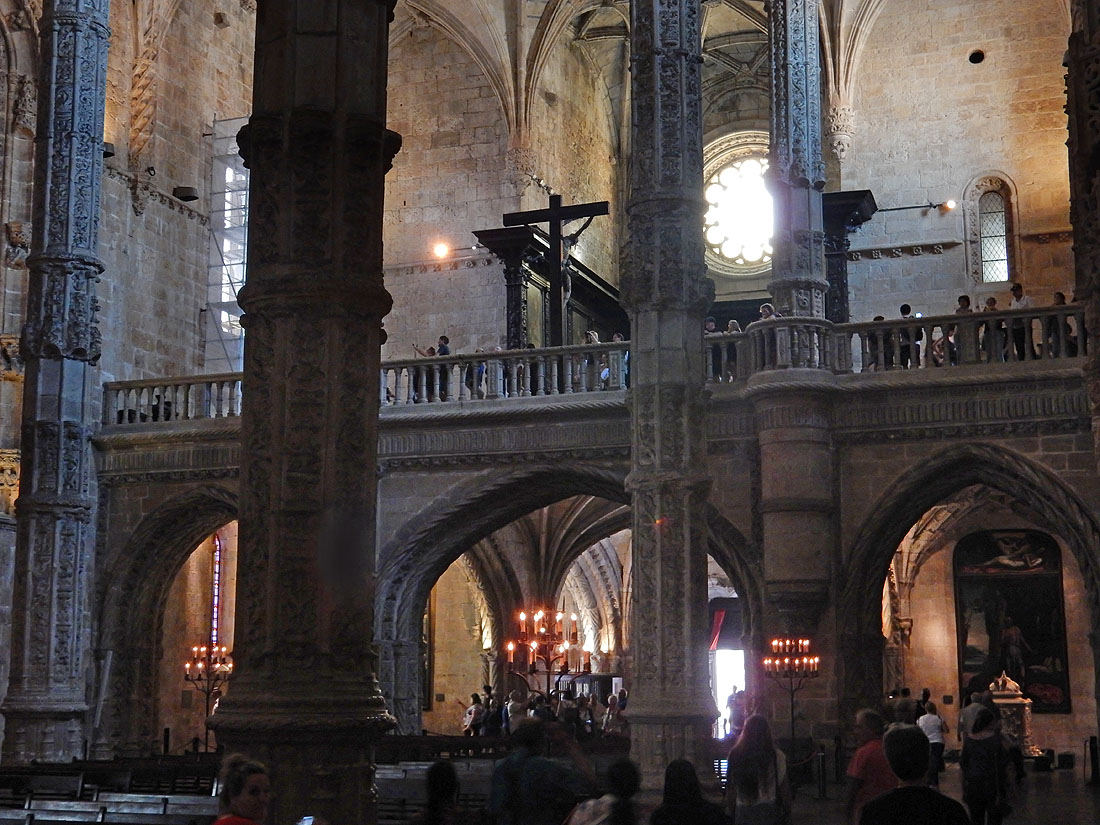 |
||
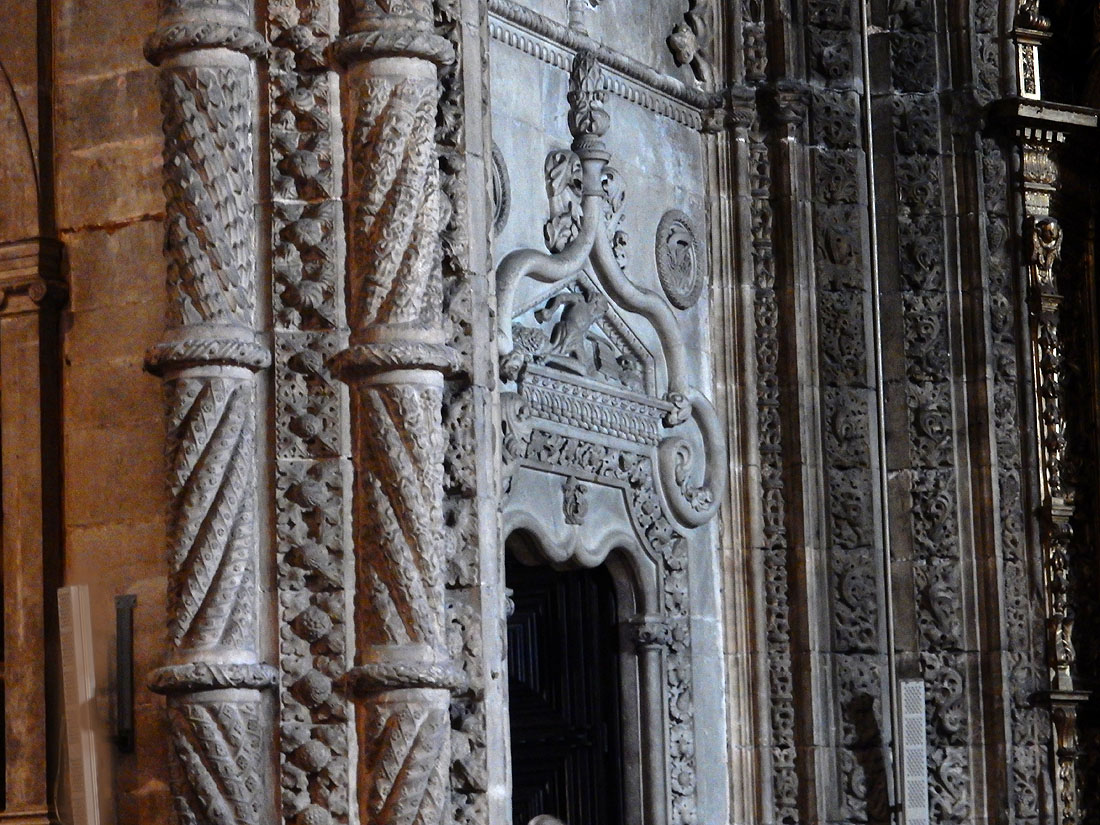 |
|||
| Just as the Spanish had developed a particular style of decoration called the Plateresque, so the Portuguese created their own distinct Late Gothic style, the Manueline. Wikipedia has this to say:
"The Manueline, or Portuguese late Gothic, is the sumptuous, composite Portuguese style of architectural ornamentation of the first decades of the 16th century, incorporating maritime elements and representations of the discoveries brought from the voyages of Vasco da Gama and Pedro Álvares Cabral. This innovative style synthesizes aspects of Late Gothic architecture with influences of the Spanish Plateresque style, Mudéjar, Italian urban architecture, and Flemish elements. It marks the transition from Late Gothic to Renaissance. The construction of churches and monasteries in Manueline was largely financed by proceeds of the lucrative spice trade with Africa and India. "The style was given its name, many years later, by Francisco Adolfo de Varnhagen, Viscount of Porto Seguro, in his 1842 book, Noticia historica e descriptiva do Mosteiro de Belem, in his description of the Jerónimos Monastery. Varnhagen named the style after King Manuel I, whose reign (1495–1521) coincided with its development. The style was much influenced by the astonishing successes of the voyages of discovery of Portuguese navigators, from the coastal areas of Africa to the discovery of Brazil and the ocean routes to the Far East, drawing heavily on the style and decorations of East Indian temples." |
|||
 |
|||
| ...and now for something completely different! Although the soaring metal struts holding up the roof of this railway station do have a whimsical Gothic feel about them. | |||
 |
|||
| I first took the Lisbon Metro to this railway staion called the Estacao do Oriente to catch a train to Evora, which is about 100 kms East of Lisbon. I was struck by the new architecture in this area so I made a point to come back later to explore the suburb. | |||
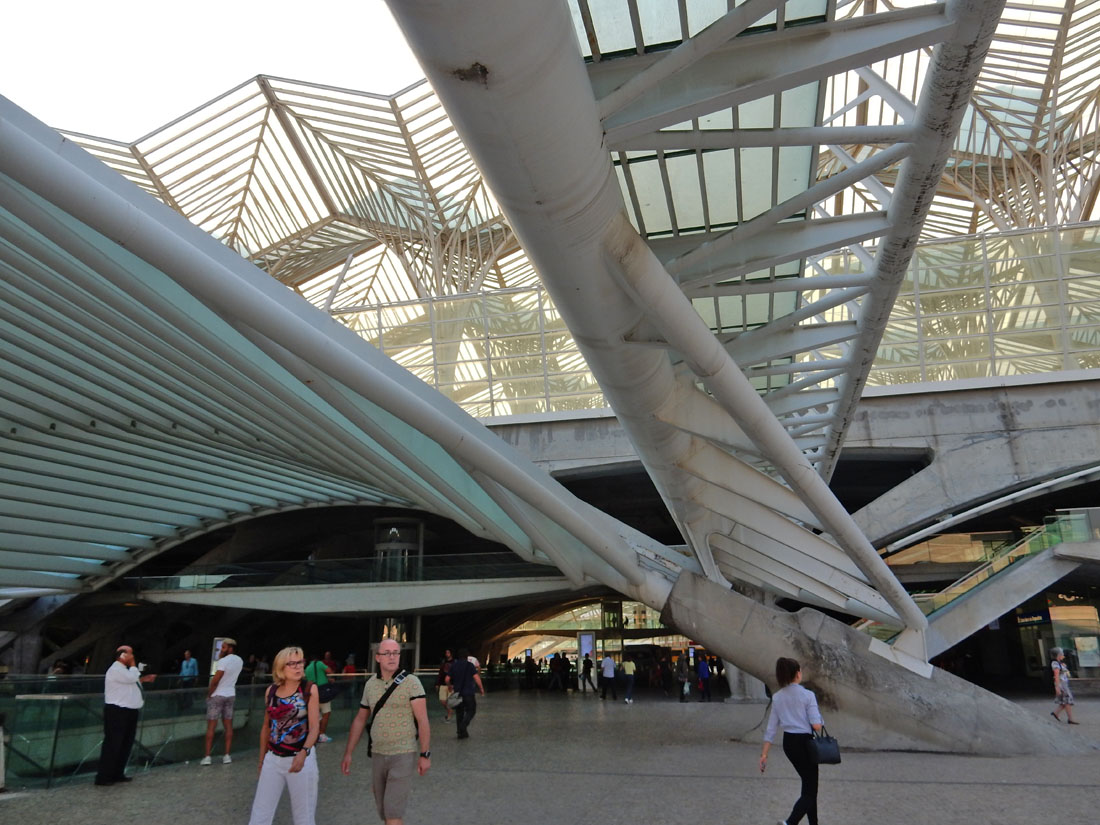 |
||
 |
|||
| This area, North-East of Pombaline Lisbon, is called the Parque Das Nacoes. It was a desolate industrial wasteland until it was completely renovated for the Lisbon Expo held in 1998. It is now popular with both tourists and with corporate firms who have moved into the district. | |||
 |
||
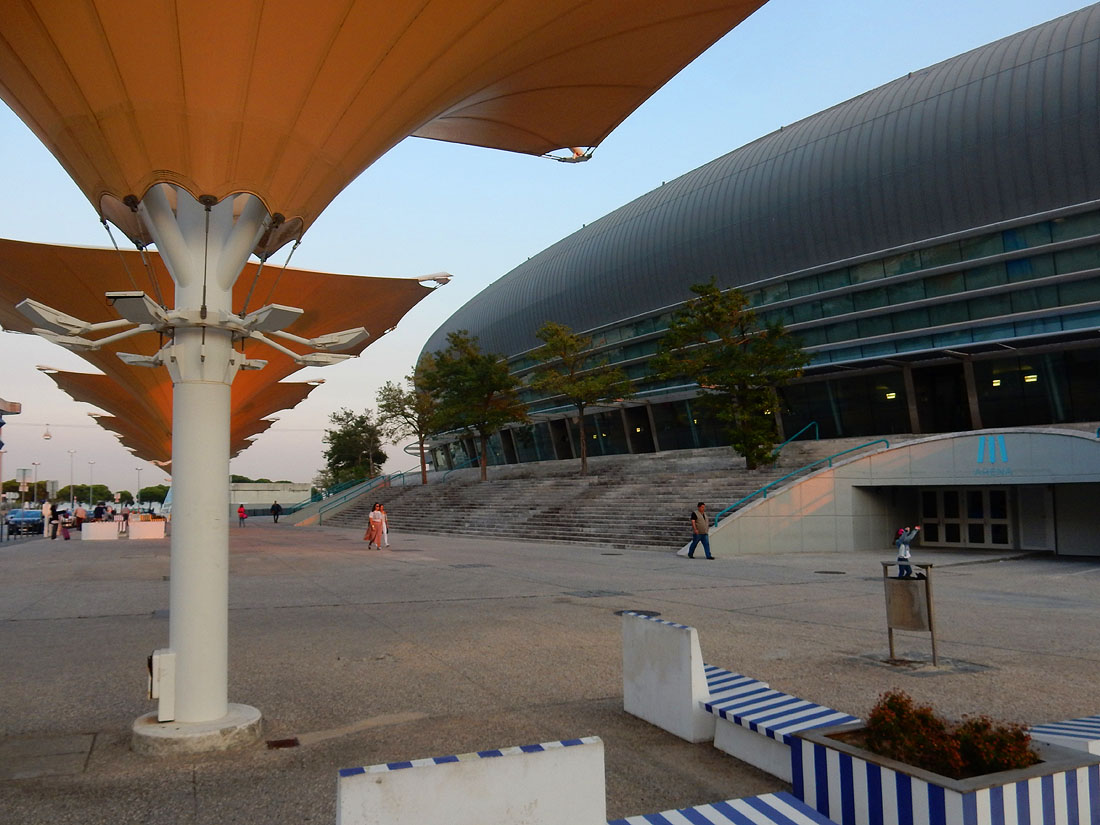 |
||
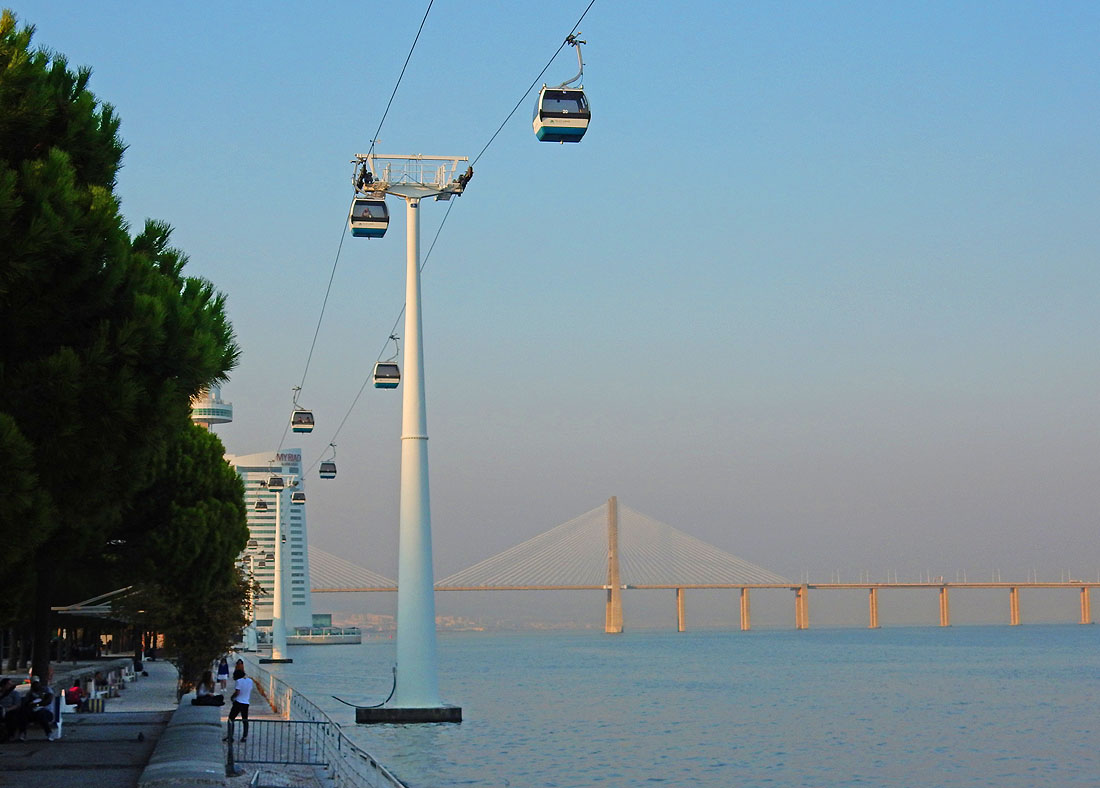 |
|||
| The evening light shines gently on the Vasco da Gama Bridge, the longest bridge in Europe. It has a total length of 12.3 kms.
It was completed just in time for Expo 98, which celebrated the 500th anniversary of Vasco da Gama's discovery of the sea route to India from Europe. |
|||
 |
|||
| The evening light turns towards night as we say farewell to Lisbon, the gorgeous capital of Portugal. | |||
|
To return to the Paintings section of this website, please CLICK HERE
|
|||